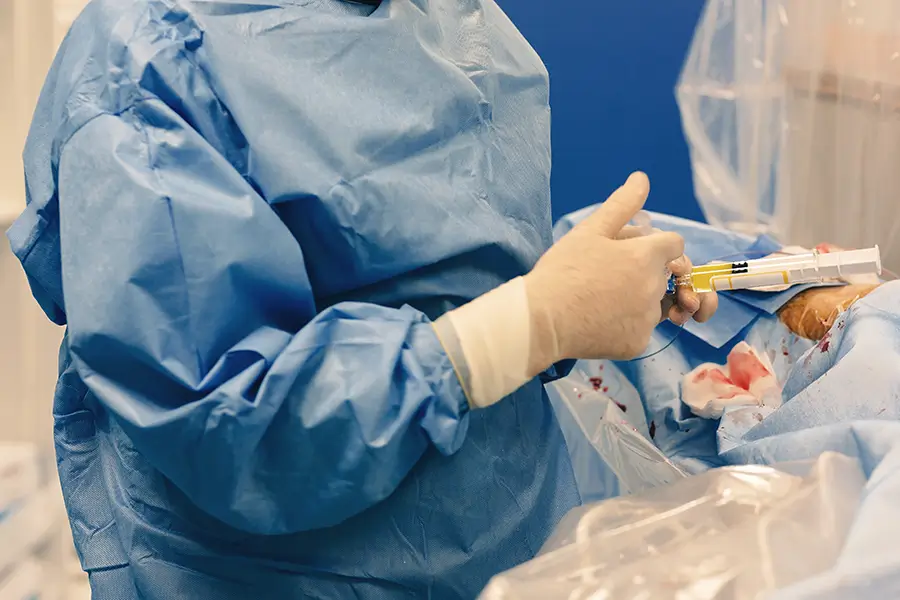Do Fibroids Come Out After a UFE?
Fibroids are a common health issue that can affect women of varying ages, causing a range of uncomfortable symptoms. When considering treatment options, many women wonder about the outcomes of different procedures, including Uterine Fibroid Embolization (UFE). In this article, we’ll explore the symptoms of fibroids, how UFE works, and whether fibroids come out after undergoing this minimally invasive procedure.
Fibroids, also known as uterine leiomyomas or myomas, are noncancerous growths of the uterus that often appear during a woman’s childbearing years. While some women with fibroids may not experience any noticeable symptoms, others can suffer from a variety of issues that significantly impact their quality of life.

Common symptoms of fibroids include:
Bloating
Fibroids can contribute to abdominal bloating, causing discomfort and a feeling of fullness in the abdominal area.
Heavy Menstrual Bleeding
One of the hallmark symptoms of fibroids is heavy menstrual bleeding (menorrhagia), which can lead to prolonged periods and the need for frequent changes of sanitary products.
Pelvic Pain and Pressure
Fibroids can cause pelvic pain and discomfort, often described as a dull, aching sensation. Some women also experience a feeling of fullness or pressure in the lower abdomen.
Pelvic Pain During Intercourse
Fibroids can make sexual intercourse painful or uncomfortable due to the pressure they exert on the pelvic region.
Frequent Urination
Fibroids can press against the bladder, leading to increased urination or a constant urge to urinate.
Constipation or Difficulty with Bowel Movements
Large fibroids can exert pressure on the rectum, causing constipation or difficulty with bowel movements.
Backache or Leg Pains
In some cases, fibroids can cause backache or leg pains, particularly if they press on nerves in the lower back.
Enlarged Abdomen
Depending on the size and number of fibroids, the uterus may become enlarged, leading to an enlarged abdomen.
These symptoms can significantly impact a woman’s daily life and overall well-being. Seeking appropriate treatment is essential to alleviate these discomforts and improve quality of life.
How Uterine Fibroid Embolization (UFE) Works
Uterine Fibroid Embolization (UFE) is a minimally invasive procedure designed to treat fibroids without the need for surgery. During UFE, a radiologist makes a tiny incision in the groin area and threads a catheter through the arteries that supply blood to the fibroids. Small particles are then injected into these arteries, blocking blood flow to the fibroids.
The lack of blood flow causes the fibroids to shrink over time. As they diminish in size, the associated symptoms often improve or resolve. UFE offers several advantages, including shorter recovery times and a lower risk of complications compared to traditional surgical treatments like hysterectomy or myomectomy.
Do Fibroids Come Out After a UFE?
The short answer is no, fibroids do not “come out” after a Uterine Fibroid Embolization (UFE) procedure. Instead, they gradually shrink and may break down over time.
During UFE, the goal is to block the blood flow to the fibroids, essentially starving them of the nutrients they need to thrive. As a result, the fibroids begin to shrink, and their size reduces over several months. This gradual process allows the body to reabsorb the fibroid tissue, which may eventually become scar tissue.
While the fibroids do not physically exit the body, the reduction in their size typically leads to a significant improvement in the associated symptoms. Women who undergo UFE often report relief from heavy menstrual bleeding, pelvic pain, and other fibroid-related issues.
It’s important to note that UFE does not eliminate the possibility of new fibroids developing in the future. However, it effectively addresses existing fibroids, providing symptom relief and an enhanced quality of life for many women.
Reach out to us today
Fibroids can cause a range of distressing symptoms that impact the lives of countless women. Uterine Fibroid Embolization (UFE) offers an effective, minimally invasive treatment option that does not involve the physical removal of fibroids. Instead, UFE works by blocking the blood supply to fibroids, causing them to shrink over time.
If you are experiencing symptoms related to fibroids or are considering treatment options, it’s crucial to consult with a specialist at Preferred Fibroid and Vascular Center in Atlanta or Northeastern Ohio. We can assess your individual situation, discuss the benefits and risks of UFE, and help you make an informed decision about the best approach to managing your fibroids and improving your quality of life.
